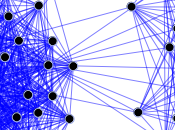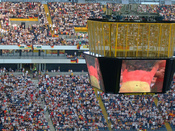Because of our involvement in various micropublics, modern life compels us to switch continuously, without conscious attention to the process, from one domain to another and among multiple sets of ties. The identity of a person engaged in interactions emerges and reemerges phenomenologically through frequent conscious and unconscious switching among different social roles. Therefore, I define "publics" as interactional spaces of discursive or nondiscursive communication emerging through the actions of shifting network connections.
I conceptualized the notion of publics as the sphere of intersections between culture and identity, and between social organizational and cognitive networks. Social organizational networks are sometimes called "social structures" when they form relatively stable networks of social relations. Similarly, when they turn themselves into networks of meaning with relatively stable boundaries, cognitive networks can form ideas, values, and ideologies. Social and/or cognitive networks alone cannot create publics even when they are intersected. It is only when the subject is involved that the rich activities of network intersections create communicative spheres of publics.
When networks increase their density and multiplicity in a society, the society increases its potential for the occurrence of publics. A book has considerable potential to form a public. But only when an individual takes the book in his or her hands and starts to interact with it does the locus of reading the book turn into a public. The involvement of human agency is critical for the creation of publics. Yet the presence of dense social and cognitive networks increases the potential to generate publics. For example, the creation of an institution called a public library in a neighborhood multiples exponentially the possibilities of creating a literary public.
Social structural networks are conducive to the structuring and creating of networks for publics; they also affect the hierarchical interrelationships among publics.


